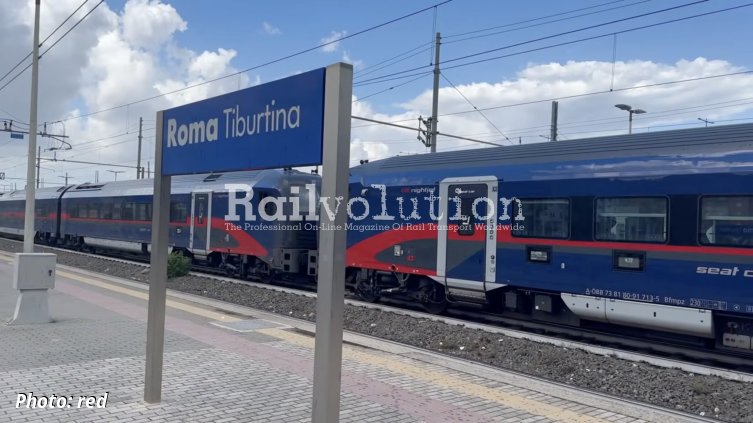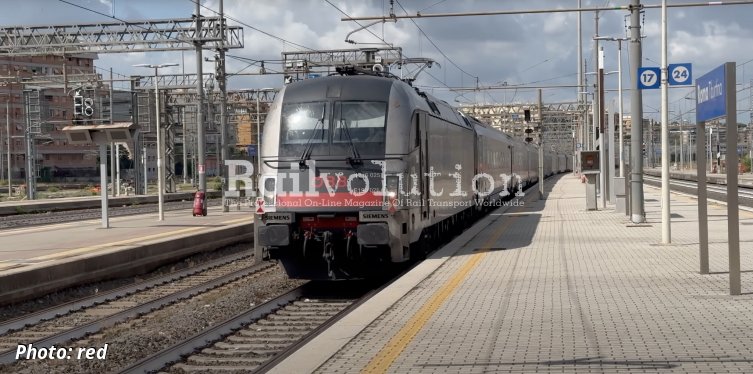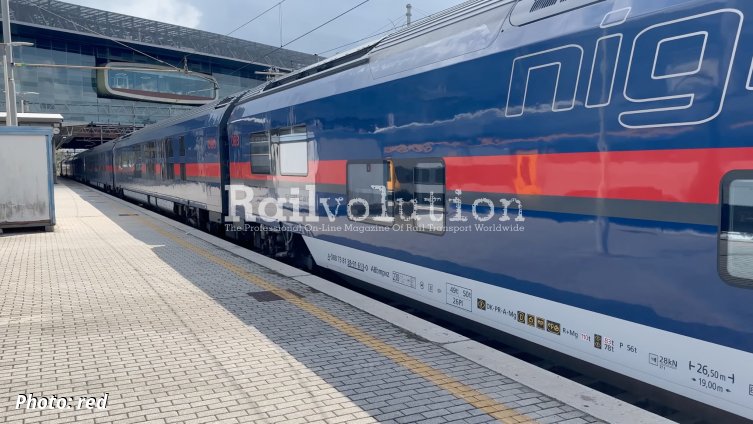New nightjet to Roma
posted on 25th Nov 2024 10:10
On 9 September 2024, the inaugural journey for the new nightjet pair Wien Hbf - Roma Tiburtina and return, operated in cooperation between ÖBB and Trenitalia, took place. The train is a non-traction multiple unit (NMU), which is carried on the NJ 233 Wien - Milano - Genova - La Spezia, which started running, initially to Genova, as from 11 December 2022, and in the opposite direction it is carried on the NJ 234.
The first train to depart for Rome was NJ 40233 from Wien, on which the nightjet unit 012 was christened "City of Rome" in a ceremonial act before departure (19 h 18). Arrival in the Italian capital is on schedule at 11 h 05 min. The return NJ 40294 service departs from Roma Tiburtina at 17 h 25 and arrives at Wien Hbf at 9 h 04. The trains run daily, with Class 1116 Taurus on the Wien - Villach section and Class 1216 Taurus on the Villach - Florence - Rome section.
As on 10 September 2024 the pair NJ 294/295 München Hbf - Roma Tiburtina and back was also introduced, as nightjet NMUs (which also uses the pair NJ 40294/40295 running between München and Genova from December 2022), their direct car/NMU groups are being remarshalled between the both routes in Villach.
The nightjet units (Viaggio N) can only be hauled by Taurus or Vectron locomotives, which are in Italy approved only for operation at a top speed of 160 km/h. Consequently, these NJ services cannot use the Florence - Rome HSL with a maximum line speed of 250 km/h, but must run on the old line, so the travel time on the Firenze Santa Maria Novella - Roma Tiburtina section is 4 h 05, which means a relatively late arrival in Roma (at 11 h 05, unless the train is delayed). Trenitalia could provide its locomotives with a maximum speed of 200 km/h, but these are not approved for operation with Siemens-built Viaggio N units.
In Rome, Tiburtina station was chosen, which is more distant from the city centre than Roma Termini. The photos taken on 13 September 2024 shows a train formed by units 713 + 711 from Wien and München after reaching the destination station. This particular service arrived more than three hours late, at 14 h 20, and without passengers who had been removed from the train in Florence due to a technical fault and had to take another train to Rome, while the pictured nightjet arrived empty (and the return service was cancelled).
On the front of the left NMU is the layer of dirt (which is also on the front of the right unit). So we asked ÖBB if their train washers have any problem with cleaning the cabs. The operator replied: „We are aware of this problem. The windows are cleaned separately. We are working on a solution.“ Nevertheless, about the origin of the dirt we can assume that the cabs are not being cleaned because the two NMUs are running through the washing facility coupled, so the brushes are not getting to the front ends in question.
However, the operation described here was of short duration, since due to the rehabilitation of the Tauern tunnel and the associated long-term closures, trains NJ 294/295 (and NJ 236/237 Venezia - Stuttgart) are cancelled without compensation for the period from 17 November 2024 to 13 July 2025, or are only operated from/to Wien south of Villach. During this period, the Wien - La Spezia wing is also operated by a standard locomotive-hauled rake (and without sleeper).
For the time being, the nightjet Viaggio N non-traction units are hauled by locomotives on each end, as the driving trailers are still awaiting approval for the push function, which should be achieved for Austria and Germany in 2025 and for Italy in 2026. Similarly, approval for operation at 230 km/h is awaited (so far the nightjet and railjet 2 NMUs are authorised only for 200 km/h).
Earlier September 2024, Siemens received type approval from ERA for nightjet NMUs for the Netherlands, operating with Vectron X4-E-Lok A locomotives (only). In spring 2025, ÖBB plans to start using these NMUs in place of the old nighjet cars on trains to Amsterdam. At the beginning of September, the operator had nine nightjet units from the first, 13-strong batch in service (003 and 006 - 013).



